#Tod is german for death
Explore tagged Tumblr posts
Text
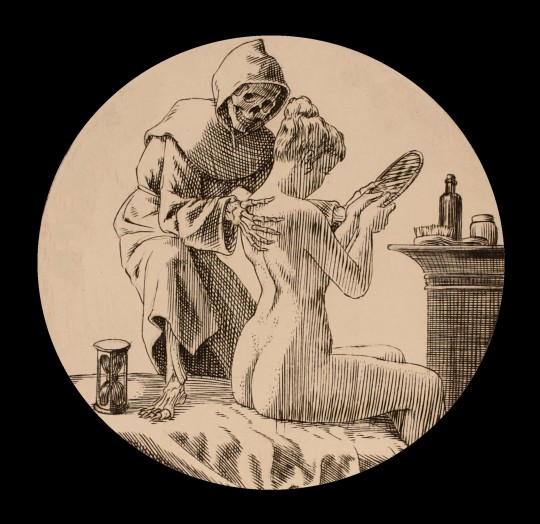
#art#etching#german art#books#illustration#book plate#allegory#death and the maiden#der tod und das mädchen#hourglass#mirror#reflection#norbert salzwedel#klaus-jürgen tischer
3K notes
·
View notes
Text

Hans Kurth, 'Aus Der Harfe Des Todes' (From the Harp of Death), ''Der Eigene'', #6-7, October 1899 Source
95 notes
·
View notes
Text



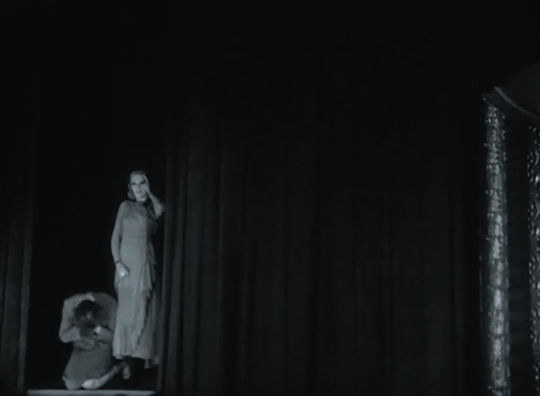

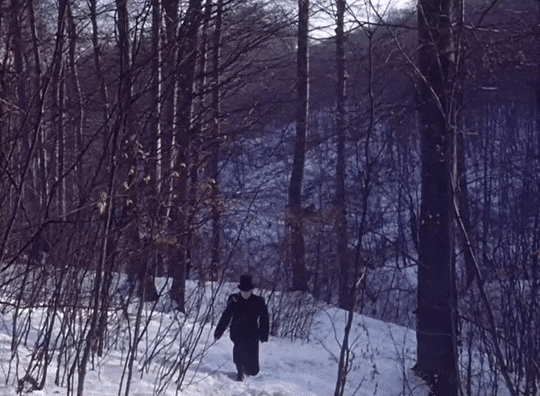

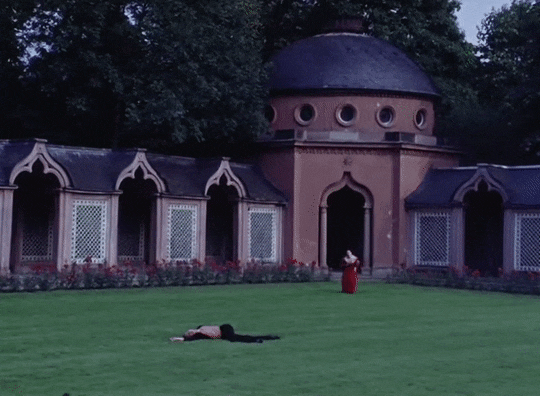
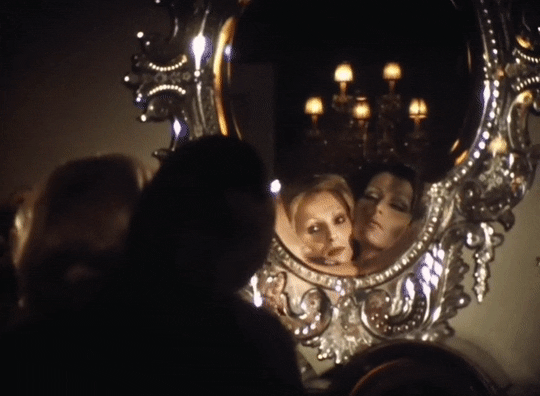

DER TOD DER MARIA MALIBRAN (1972) dir. Werner Schroeter Maria Malibran, a legendary Spanish-French opera singer who died in 1836 at the age of 28, forms the starting point for a series of stylised tableaux introducing variations on different levels, including in the form of musical phrases. Fragments of stories that take place in a non-existent country, in which the characters do not have any clear identity and are mutually interchangeable, a reflection on the 19th century cult for geniuses and divas. (link in title)
#lgbt cinema#trans cinema#der tod der maria malibran#the death of maria malibran#german cinema#candy darling#lgbt#trans#lesbian#bisexual#transgender#germany#west germany#lgbt movie#trans movies#german movie#lgbt film#trans film#german film#lgbt media#trans media#queer cinema#european cinema#werner schroeter#Magdalena Montezuma#christine kaufmann#1972#1970s#70s#70s film
171 notes
·
View notes
Text

Karel Thole (1914-2000) - Der Schwarze Tod (The Black Death)
cover art for Vampir Horror-Roman #41, November 20, 1973
#karel thole#der schwarze tod#the black death#vampir horror roman#grim reaper#plague#cover art#horror art#pulp art#german horror pulp#art#painting
240 notes
·
View notes
Photo

Werner Schroeter, Der Tod der Maria Malibran (The Death of Maria Malibran), 1972, still from a color film in 16 mm, 104 minutes.
#der tod der maria malibran#the death of maria malibran#werner schroeter#1972#new german cinema#magdalena montezuma#cinematic still#film#still#stills
173 notes
·
View notes
Text
other translation choices the german ofmd dub makes that I adore:
"lily-livered little rich boy" - "kleines feiges Bonzenbürschchen" Bonze (Bürschchen is like Boy (disrespectful)) being the interesting word here - it's a derogatory term for rich and powerful people who abuse their enormous influence for their own benefit. Out of the mouth of father Bonnet it's an epic self own
"Don' trifle with me" is translated as "Don't play games with me" ("Spielen Sie keine Spielchen mit mir!") which deteriorates into "Nicht spielen!" ("No playing!") said with the same tone of voice someone might use with an unfamiliar but suspiciously growly dog. Amazing 10/10
Mate - Kumpel. Which, ik, is the obvious choice but: Kumpel is originally what miners called each other (and still do afaik). It's not really nautical but does have strong working class vibes, which delights me for reasons of Themes and Motives.
When Izzy spits and mutters "Pirates my ass" in ep2, german!Izzy says Schwachmatenpiraten. (Schwachmat meaning imbecile/idiot/moron) Excellent use of compound nouns, this is my new favourite word.
Speaking of Izzy insults, another fave: at the beginning of ep6, when Ed demostrates a fuckery, Izzy snaps at Stede for failing to call Ed Blackbeard and calls him Banause. This is an insult for people who are uncultered/uneducated and don't appreciate art.
After Calico Jack tries and fails to shoot the bottle he says "Daneben" (missed) to which Buttons replies "Ein bisschen" (a bit). Fun little bit of passive aggression - something or someone being daneben can also mean it's inappropriate or unpleasant.
The quiet, thoughtful way german!Ed says "... du." right before the kiss. He sounds much less certain and more questioning than the og which I feel Very Normal about.
#also: generous use of Wichser one of the best insults in our language imho#sadly not a single hurensohn to be seen. lack of alter as well but you can't have everything#german!izzy is hilarious I feel like he almost works better in a language that has a formal you#our flag means death#Unsere Flagge bedeutet den TOD 🏴☠️#thoughts
147 notes
·
View notes
Text

I’m too proud of this lmao
#elisabeth das musical#elisabeth#der tod#uwe kröger#1992#european musicals#german musicals#musicals#death
9 notes
·
View notes
Text


Der Tod der Maria Malibran (1972) - Werner Schroeter
So groß ist das Entsetzen, das der Mensch vor seinem eigenen Mitmenschen hat.
#der tod der maria malibran#the death of maria malibran#werner schroeter#christine kaufmann#magdalena montezuma#ingrid caven#manuela riva#film#film still#quote#german cinema#watched in february 2023#watched in accra#candy darling#opera
19 notes
·
View notes
Text

Schöne Jugend (1912) by Gottfried Benn
#expressionism#expressionismus#Gottfried Benn#Schöne Jugend#1912#aesthetic#prose#literature#poem#Ästhetik des Verfalls#gedicht#deutsche literatur#german poetry#german poem#poetry#death poem#death poetry#Tod#20th century#early 1900s#1900s#1900s art
1 note
·
View note
Text
Versuch über die Sterblichkeit
Man ist und wird
nicht und vor allem
niemals mehr,
zumindest in und mit
dem ganzen Vergangen'
als einer Wer.
So lebt und stirbt
man doch am Krallen
am Lebensmeer,
denn zu leben ist
zu dem Ganzen -wahr-
eine Wiederkehr.
Doch da dies doch ist,
und schon immer gewesen
mit und seit Leben her,
erblicket man sich
mit allem und jedem
als Ewiger.
#english#german#poesie#deutsch#josie escoba#poetry#death#Sterblichkeit#Tod#tot#mortality#living#dying#Leben#sterben#Dichtung
0 notes
Text
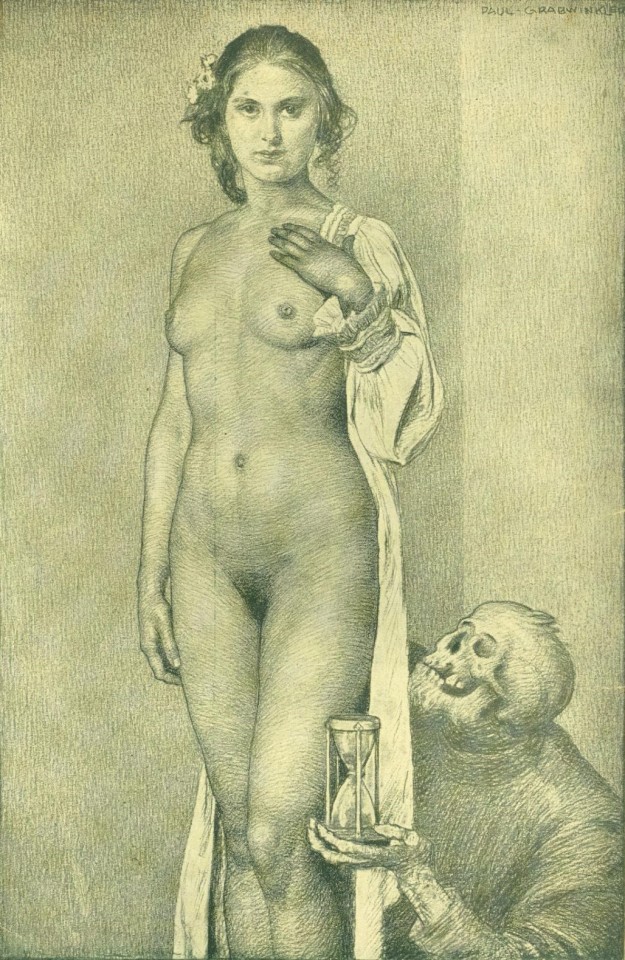
#art#illustration#magazine illustration#Mocca Zeitschrift#german art#drawing#death and the maiden#der tod und das mädchen#Der Unerbittliche Freier#paul grabwinkler#Mein Antrag ist ernst. Er ist für die Ewigkeit.
750 notes
·
View notes
Text
Dark S3E5&E6, "Life and Death/Leben und Tod" & "Light and Shadow/Licht und Schatten"
Welcome back to Curious Combinations, an Everything's Unoriginal podcast. CC is a podcast in which I explore new-to-me fictional stories across television, film, books, and even other podcasts! I'm starting with the German Netflix series DARK.
This week, I'm covering Dark Season 3 Episodes 5 and 6.
Coming soon will be coverage of Archive 81 (TV), Marianne, Vampire Knight, and Castlevania.
Support the show on Patreon!
#curious combinations#podcast#aftanith#dark#german#netflix#s3e5#s3e6#life and death#leben und tod#light and shadow#licht und schatten
0 notes
Text
“If it should be, and he came to London, with his teeming millions. … There may be a solemn duty; and if it come we must not shrink from it.”—Bram Stoker, Dracula
A vampire must avoid direct sunlight to avoid crumbling into ash, yet few folk horrors have been subject to more scrutiny than the transformative bloodsuckers who dominate the night. A new and absolutely terrific cinematic take on the myth, Robert Eggers’ Nosferatu, has hit theaters, and its most notable element, in addition to outstanding performances, dialogue, and production design, is that this new version really amps up the lusty goth quotient. (So much hallucinatory writhing and moaning!) However, its release so close to the inauguration of a U.S. president who has stoked fears of immigrants draws out xenophobic elements inherent to the text, and an inner tension with its own reactionary origin is part of the genius of this new film.
If you aren’t a subscriber to Fangoria magazine, you may not know the Nosferatu backstory. The first version, released in 1922, is a landmark of German filmmaking that plundered intellectual property as if it were the grave of a Victorian noblewoman buried with her jewels—a fate some of the characters in Dracula think has befallen poor Lucy Westenra, before it is revealed she is actually an accursed undead demon!
Unlike his most famous literary creation, though, Irish-born writer Bram Stoker does not walk the earth a century after his death. As such, the theater manager who wrote books on the side would likely be surprised at the strength of his legacy. Dracula, published in 1897, was only a modest success at the time. It was not even the first book about vampires published in English; how it became the wellspring for vampire iconography—to the point that is used to sell breakfast cereal—is perhaps due to vivid, dueling film interpretations.
In 1921, a German film producer with an interest in the occult created a new studio (Prana) with an eye toward making supernatural-themed films, and kicked things off with an adaptation of Dracula. He hired Henrik Galeen, who co-wrote the outstanding expressionist The Golem: How He Came Into the World, to write the screenplay, and F. W. Murnau—who would later make Sunrise: A Song of Two Humans, one of the undisputed masterpieces of silent cinema—to direct. But he did not pay for the rights to Bram Stoker’s book. Instead, Galeen changed the names of the characters (Count Dracula to Count Orlok) and the location (London to Wisborg, a fictional German city), and made some additional tweaks to the narrative. The title, Nosferatu, is a word used in Dracula to categorize vampires, meaning undead. (The etymology of this word remains debated, but it may have its roots in the Greek nosophoros, meaning “disease-bearing.”)
Nosferatu: A Symphony of Horror was released to significant acclaim, but one person who wasn’t happily chomping on popcorn was Florence Balcombe, Bram Stoker’s widow. An anonymous informant sent her a handbill from the movie’s lavish premiere at the Marble Hall of the Berlin Zoological Gardens. The promotional material boasted that the film was “freely adapted” from Dracula. Balcombe took this to court, won her case, and bankrupted Prana, which was ordered to destroy every copy of Nosferatu. Clearly, this did not happen, as you can still watch the movie today—and, despite the iffy ethical origins, you should; it’s terrific.
But what Balcombe did next was key. Springboarding off the increased interest in the story (and to guarantee proper payment on copyrighted material), she greenlit a stage production. The show ended up being a hit in London in 1927, then moved to New York later the same year. That version starred Bela Lugosi. Four years later, Lugosi reprised the role for Tod Browning’s film version for Universal Pictures, the first talkie in the Universal Monsters series. It was a sensation, and Lugosi’s sharp-toothed Transylvanian is now an early screen icon on par with Chaplin’s Little Tramp.
Other Dracula movies were soon in the works—a Spanish-language version was actually shot concurrently with Browning’s, using the same sets—and have never stopped. Hammer Studios in Britain made several classics starring Christopher Lee; there’s the Andy Warhol-presented Blood for Dracula; the disco era’s comedy Love at First Bite; Francis Ford Coppola’s stylistic version from the 1990s; and then there’s Adam Sandler’s Hotel Transylvania cartoons. Moreover, Lugosi knew a good gig when he saw it. The actor reprised his role for comedy (Abbott and Costello Meet Frankenstein—and also the Count!) and special appearances (a gig on Fred Allen’s top rated Texaco Star Theater radio show is just one example), and also starred in several Dracula-esque horror titles like The Devil Bat. While Lugosi’s lines from Dracula were instantly quotable (“I never drink … wine” is certainly my favorite), behind it all was the less hokey, dreamlike silent film version of Nosferatu, sprung from illicit origins and filled with striking sinister imagery.
Shadow of the Vampire, released in 2000, imagines that the original production was cursed because actor Max Schreck, who played Count Orlok, was truly a vampire. (Willem Dafoe was nominated for an Oscar for his performance of Schreck in this behind-the-scenes comedy, which is especially amusing because he plays the part of Prof. von Frantz, a spin on Stoker’s Dr. Van Helsing, in the new film.) Shadow of the Vampire’s premise—the cover up of an unsettling (fictional) aspect of the original Nosferatu—works because, while the intentions of Murnau and company are hard to know, it is easy to see how German audiences of the 1920s could read Nosferatu as antisemitic.
The film and its source material read like a laundry list of antisemitic tropes: The Count comes from “the East,” a backwards, superstitious land. (Transylvania, while certainly a real place, means “beyond the woods.”) He has somehow amassed a fortune despite living apart from the villagers who fear and despise him. He is a non-metaphorical bloodsucker. When he gets to civilization, he immediately starts preying on women. In most versions of the story, the first woman he assaults turns into a vampire herself, then starts draining the blood of babies and children, recalling the many examples of supposed blood libel used to excuse antisemitic violence throughout the previous centuries. When the character of Mina Harker (called Ellen Hutter in Nosferatu) is finally penetrated by the count, she declares that her blood is “unclean.” The Count’s curse demands that he sleep each night in the earth of his origin, but he comes up with a sneaky loophole by packing several coffins filled with Transylvanian dirt. One way to interpret the Count’s actions is metaphorical: The immigrants are unwilling to assimilate and they taint our family lines and drag their traditions along with them from the old country. But on a much more literal level, it is quite bluntly blut und bloden, blood and soil, a Nazi rallying cry since the 1920s that, unfortunately, persists to this day.
While these symbolic plot elements exist in the 1897 novel, it was the 1922 German film that dialed them up, adding some undeniable antisemitic visual tropes. Count Orlok, compared to the Spirit Halloween-ready Count Dracula, has a hooked nose and rodent-like clutching hands, an exaggerated reinterpretation of the Count’s features compared to how they are described in Stoker’s book. (Lugosi’s Dracula from 1931 eases up on the visual stereotypes considerably, but he does wear a six-pointed star the first time we see him.)
Murnau also added a plague element to Nosferatu’s storyline. When the Count’s ship comes to Wisborg, it arrives with rats and a rapidly spreading sickness. This “verminization” goes hand-in-hand with the notion of the “dirty Jew.” It is believed that Julius Streicher, editor-in-chief of the Nazi mouthpiece Der Stürmer, was a fan of the film, and Hitler himself, in Mein Kampf, compared Jews to vampires.
So hold on a second, you are telling me that a major motion picture studio has released a work of antisemitic propaganda, and it’s in theaters right now? Do I need to send an angry letter? No, not at all. Please do not cancel Robert Eggers, one of the more brilliant directors on the scene today, whose take on Nosferatu tamps down the antisemitism. (This is his fourth film, following The Witch, The Lighthouse, and The Northman, all very sharp plays on genre storytelling, and all worth watching.). Now, Count Orlok just has a weird and striking nose, not a hook nose. He is also less of a schemer. He is compelled to come to Wisborg, as if it is part of his burdensome curse. If one were to ask, “Why make this movie again?” I’d say that, apart from the exemplary sets and performances and cinematography, Eggers emboldens the supernatural, psychosexual connection between the Count and Ellen. Yes, the town leaders of Wisborg—ostensibly the heroes—remain understandably xenophobic. But Eggers adds a top layer of tragedy, by making the subtext text: The Count and Ellen should be able to get their telepathic freak on, but the social codes of the 1830s are so stifling that even the Prince of Darkness can’t fight them. This creates a tension to the story (and its anti-immigration strain) that feels entirely new.
Considering that hardly anyone watching the new Nosferatu will be unfamiliar with vampire tropes, Eggers is well within his rights to essentially copy-paste elements from the more problematic version and build on it. The added shading, leaving the audience wondering if maybe the Count isn’t such a villain, is enough nuance to keep this from feeling like a definitive political statement. After all, the first thing you’ll likely talk about after seeing it is Ellen’s (Lily-Rose Depp) several moments of bed-ridden, prurient murmuring “he’s coming!” from a dream-like haze. For a director who has made three sharp movies dealing with the supernatural or fantastic, this story is in Eggers’ blood.
10 Vampire Streaming Recommendations
Nosferatu: A Symphony of Horror (1922), dir. F.W. Murnau: The original nightmare.
Dracula (1931), dir. Tod Browning: The birth of a franchise. Warning: Though there are many classic moments, much of this movie is dull.
Dracula Has Risen from the Grave (1968), dir. Freddie Francis: The third Christopher Lee Dracula picture, and one that likely influenced the new one—as it was, for its time, a bit on the randy side.
Blacula (1972), dir. William Crain: An 18th century African prince is transformed into a vampire by Count Dracula himself, and ends up in 1970s Los Angeles. Released during the first wave of blaxploitation films, this was the first one to get supernatural.
Love at First Bite (1979), dir. Stan Dragoti: The Count comes to groovy New York and is faced with nonstop schtick. Richard Benjamin plays the famed vampire hunter Van Helsing’s grandson, a neurotic shrink named Dr. Jeffrey Rosenberg.
Nosferatu the Vampyre (1979), dir. Werner Herzog: Before Eggers, there was this German-language take focusing on Count Orlok. A slow-paced film that goes heavy on the plague storyline, featuring a substantial number of rats.
Bram Stoker’s Dracula (1992), dir. Francis Ford Coppola: Gen X Dracula, with Winona Ryder, Gary Oldman, and Keanu Reeves.
Thirst (2009), dir. Park Chan-wook: Not a Dracula film, but an unpredictable spin on the vampire myth from one of South Korea’s great filmmakers.
Only Lovers Left Alive (2013), dir. Jim Jarmusch: Cinema’s king of deadpan cool presents artists and rock musicians as vampires eternally on the fringes of society. (A documentary?)
El Conde (2023), dir. Pablo Larraín: Perhaps of particular interest to Foreign Policy readers, this Spanish-language picture, available on Netflix, suggests that Augusto Pinochet was actually a vampire, and takes it from there.
108 notes
·
View notes
Text



artist (Twitter @ hbib127)
Das musical Elisabeth 2006 (Der Tod) x 夜访吸血鬼interview with the vampire 1994 (Louis)
crossover
death is based on actor olegg vynnyk from the german version.
Most deaths won't interest Louis (since he's just the sissi's lover). However, Olegg Death tends to be a bit smug (I think he takes after Pia sissi, lol), so he might be interested in Louis, who adores Death. It's so sad and beautiful to see Louis carefully kissing someone he can't reach.
And Death is damn good looking. Look at the shiny blonde hair. This is a commission I don’t regret one bit.
#elisabeth das musical#der tod#european musicals#elisabeth das musical fan art#iwtv 1994#interview with the vampire#crossover#louis de pointe du lac
435 notes
·
View notes
Text
Why ruin something that was already perfect?
Literally every newer non-german production with a quarter of a budget of VBW has tried to incorporate something new into the source material. I'm not saying every interpretation or costume/staging worked in favour, but at least there's effort and a certain vision.
VBW has no right to keep serving us a watered-down version of a genuinely spectacular and deeply beloved musical.
(Also the audacity to call it the Celebrated Schönbrunn Version 🤔)
The vines in the Heinrich designs were created to represent death and decay. Sissi wore a dirndl in Wie Du as she hailed from Bavaria. The set design incorporated elements inspired by Habsburg carriages/hearses.
So what exactly do the new changes bring to the table?
Der Tod's veil is stripped away and replaced with a meme-worthy toy. He went from having 4 stunning well-crafted outfits to ONE painfully boring fit in the entire show.
Tod and Rudolf's relationship is diminished to the point where it no longer represents its original depth or significance.
Rondo is a misfit and doesn't even appear anywhere else in the show unlike the intended Japanese/Hungarian versions.
There is no glitz, no glamour, and most importantly the storytelling is compromised. Literally everything the musical stood for is reduced to nothing.
Most upsetting of all is the clear disregard VBW shows for the audience, who adore the musical and deserve more than this cheap execution, and for the immensely talented cast, who deserve a production worthy of their skills.
#elisabeth das musical#musical theatre#european musicals#michael kunze#der tod#costume design#musicals#todolf#lukas mayer#dennis hupka#schönbrunn#vbw#elisabeth of austria
62 notes
·
View notes
Text
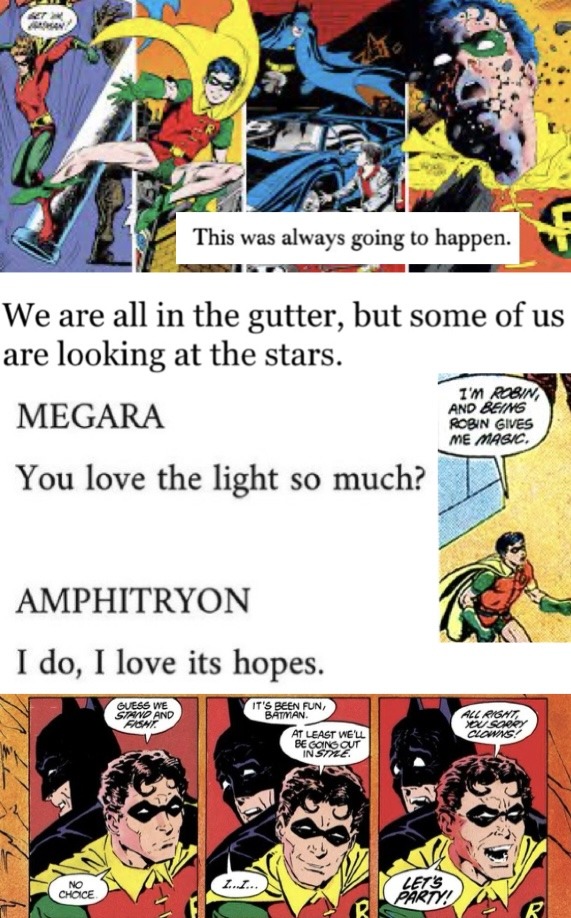
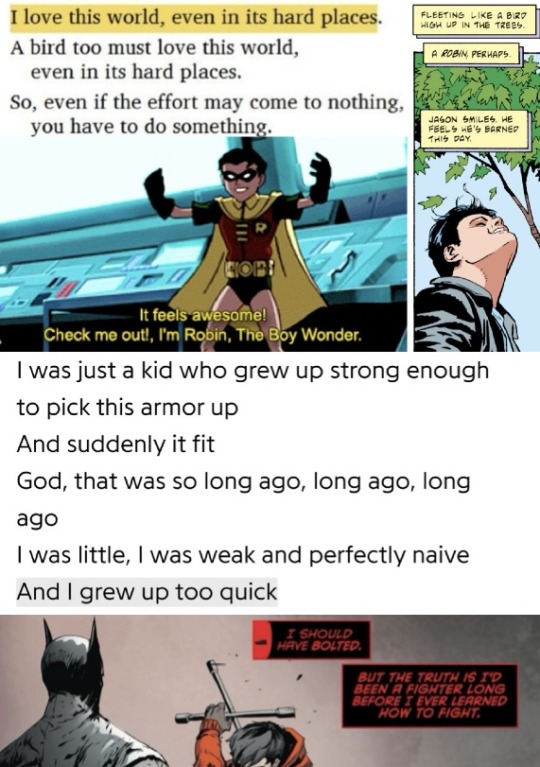

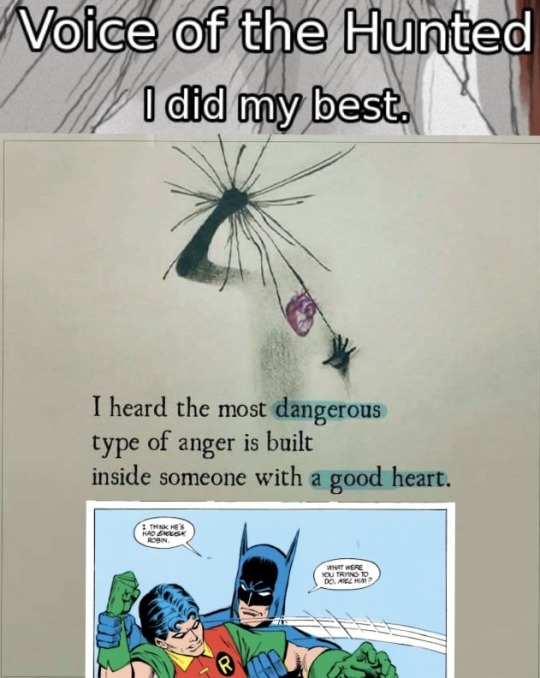
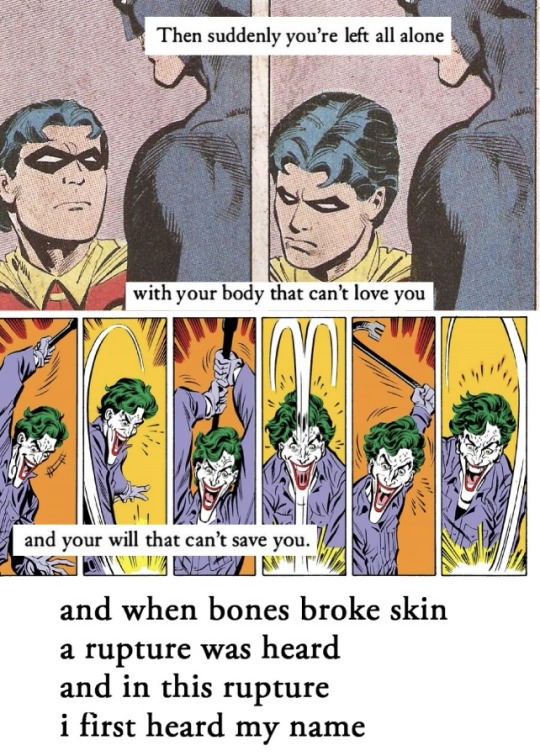

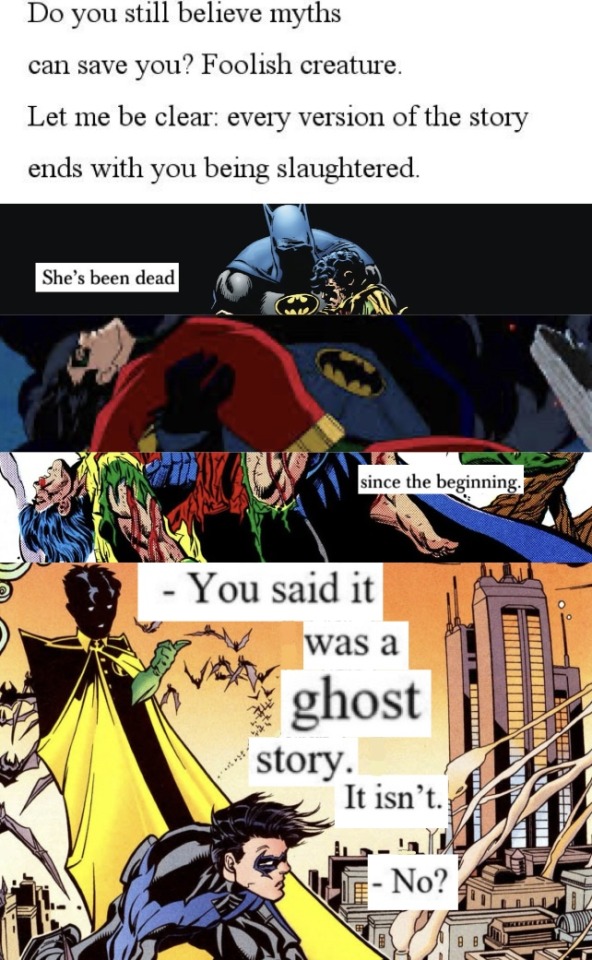
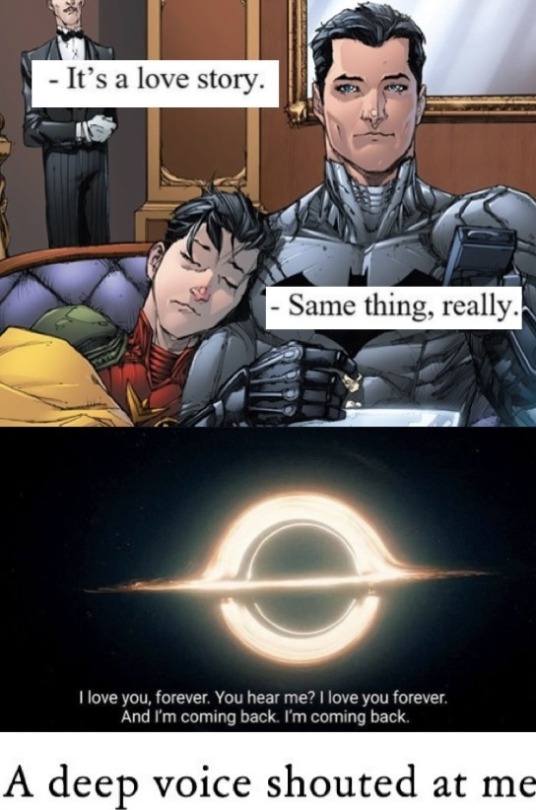

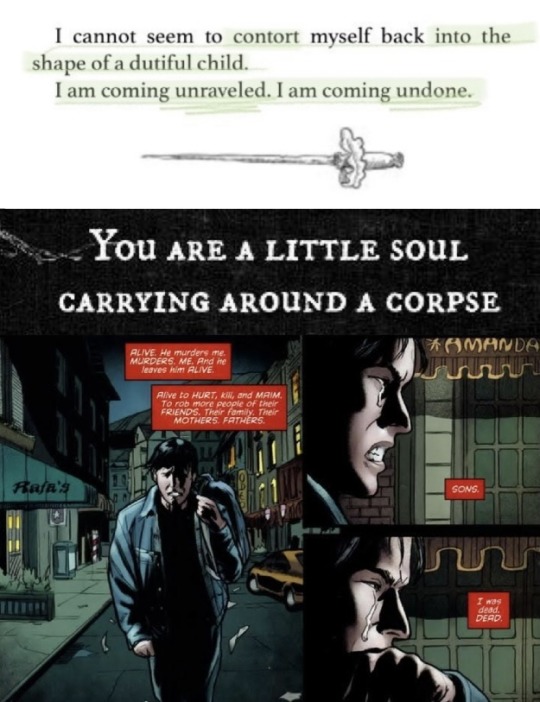
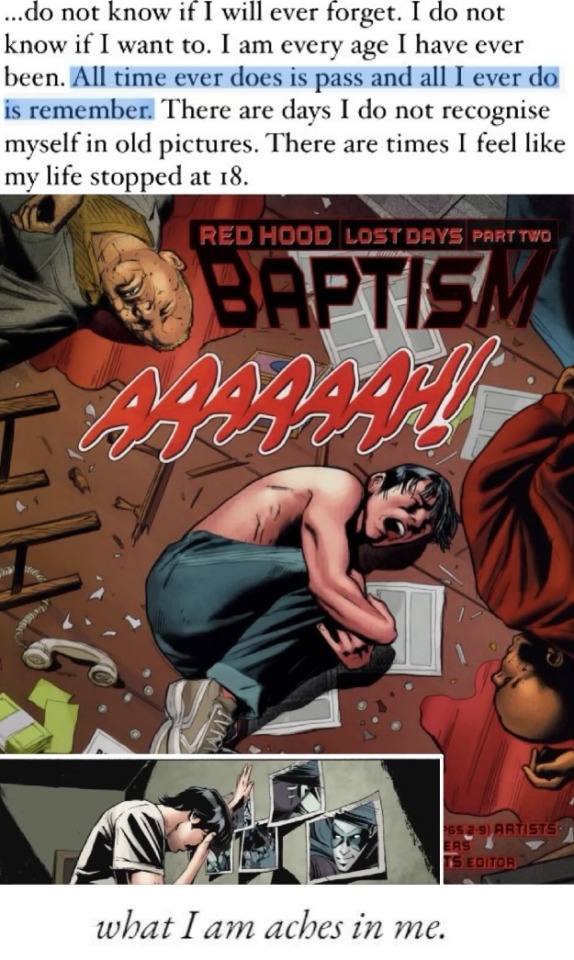

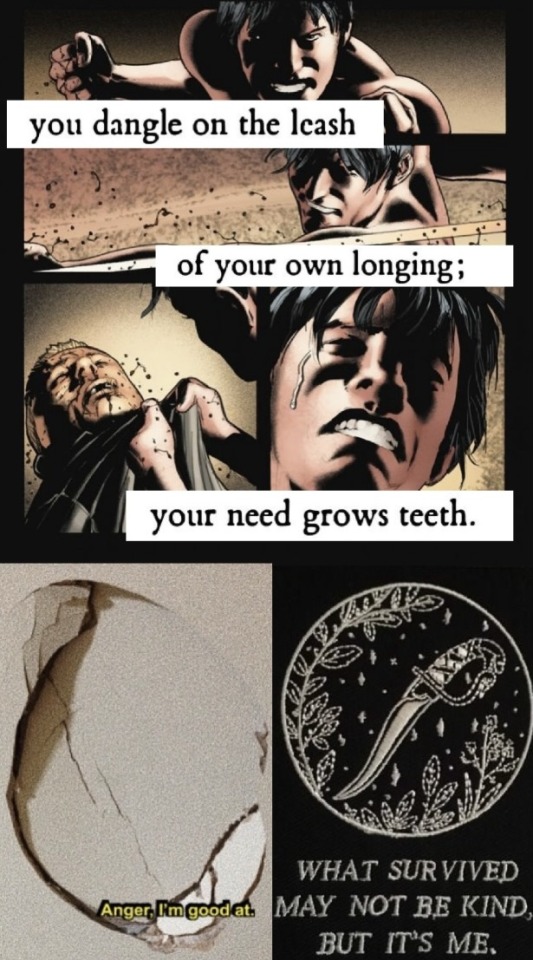

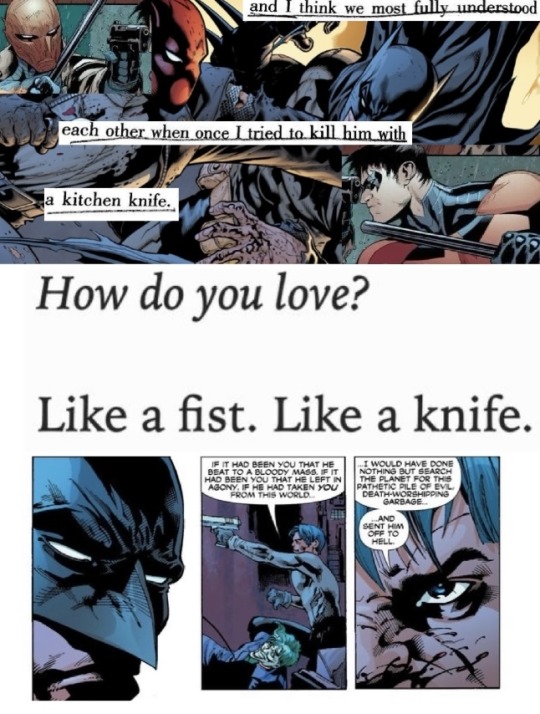
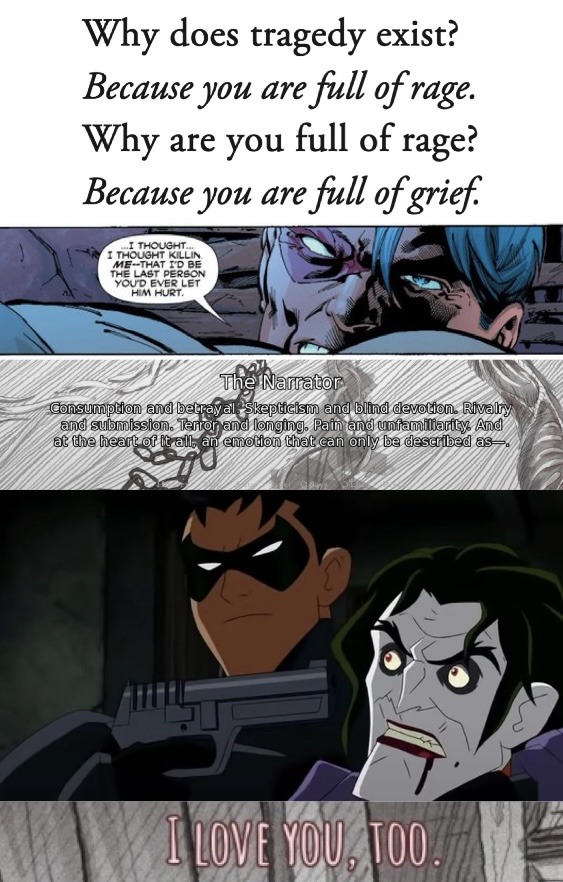
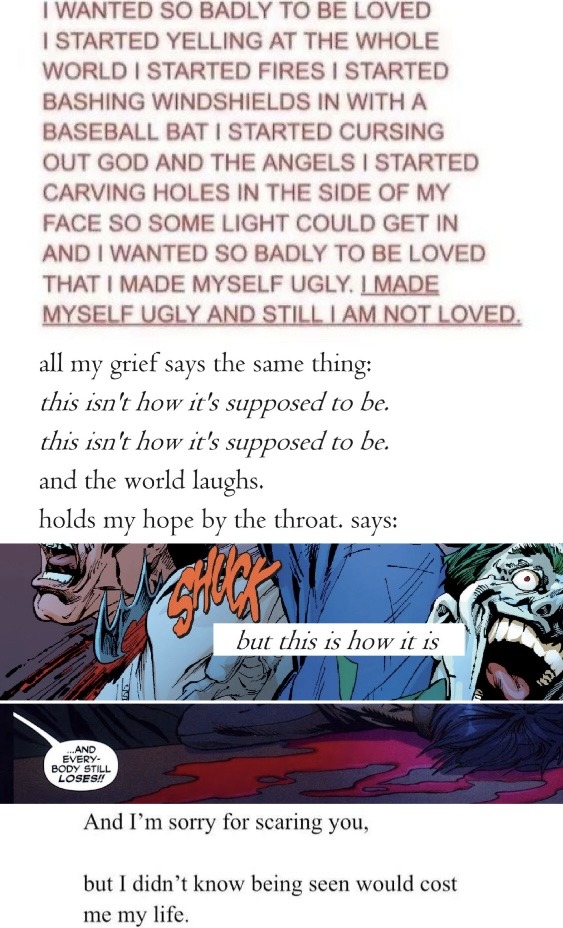

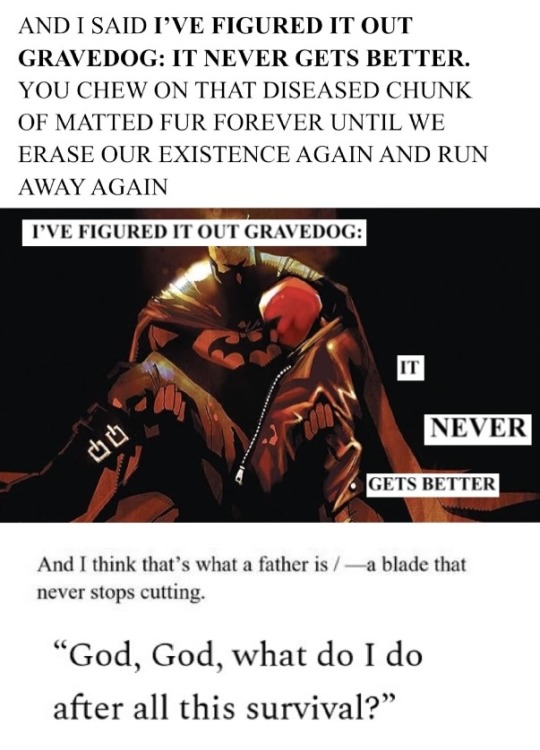

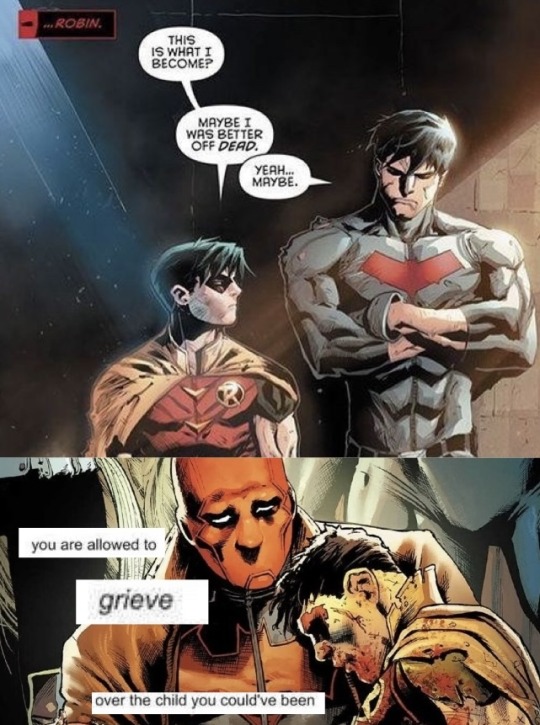


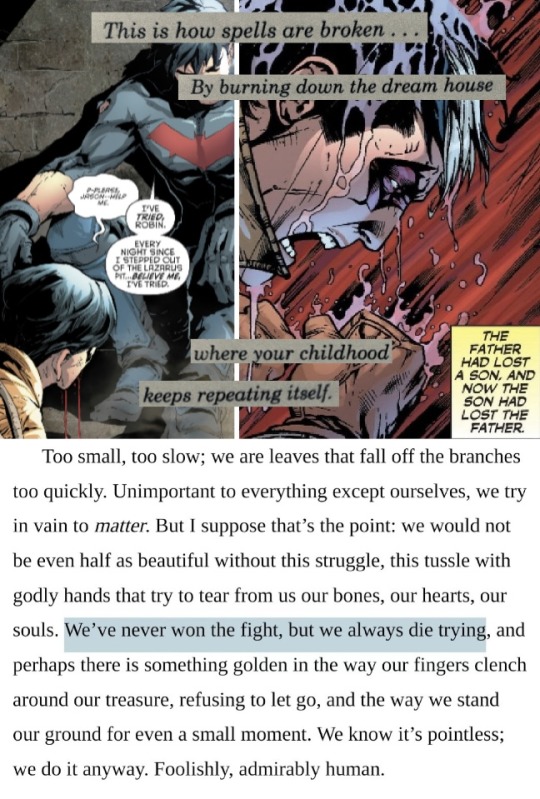
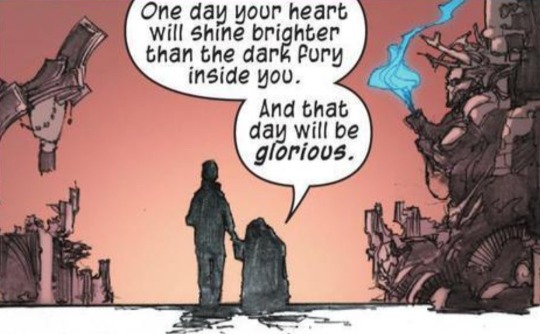

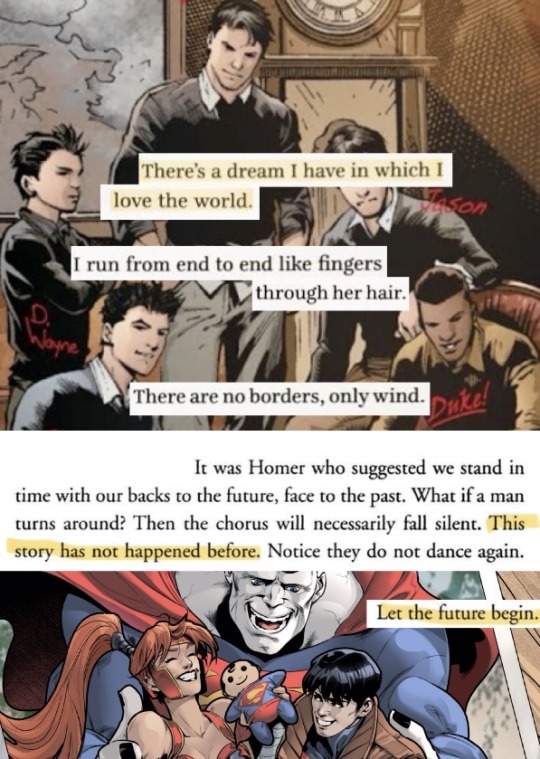
Jason (from the Greek Iásōn, “healer”) Peter Todd (from the German Tod, “death”) - I hope you find your way out of that grave.
dc comics + The Oresteia, Aeschylus / Lady Windermere’s Fan, Oscar Wilde / Grief Lessons: Four Plays [tr. Anne Carson], Euripides + Batman v1 #385 / Batman: The Cult #3 / For Example, Mary Oliver / Batman: Legends of The Dark Knight #100 / Batman: Under the Red Hood / Eight, Sleeping at Last / Red Hood and the Outlaws: Rebirth / Batman: Urban Legends #10 + ? / On Earth We’re Briefly Gorgeous, Ocean Vuong / Red Hood and The Outlaws #25 / Slay the Princess / pinterest + Batman #422 / Batman #424 + Rilke's Book of Hours: Love Poems to God, Rainer Maria Rilke + Batman #428 | A Death in the Family / @/metamorphesque, tumblr / American Teenager, Ethel Cain / Anecdote of the Pig, Tory Adkisson / interpretations of A Death in the Family + The Oresteia, Aeschylus / Nightwing: Secret Files and Origins #1 + the Haunting of Bly Manor + Red Hood and the Outlaws #23 / @/petrichara, tumblr / I Didn't Apologize to the Well, Mahmoud Darwish / Infinite Crisis: Secret Files + pinterest / Ruin and Rising, Leigh Bardugo / Red Hood and the Outlaws #26 / The Cruel Prince, Holly Black / pinterest / Red Hood: The Lost Days / Sue Zhao / Red Hood: The Lost Days part II + Red Hood: The Lost Days #4 / I See Boats Moving, Fernando Pessoa / Oedipus the King, TV Tropes / @/devilsmoon, tumblr / Red Hood: The Lost Days + Speeches for Dr Frankenstein, Margaret Atwood / Saving June, Hannah Arrington + embroidered patch / Slay the Princess / unaligned, @/hamletmaschine + Batman: Under the Red Hood / Batman: Under the Red Hood + Batman and Robin #11 + South and West: From a Notebook, Joan Didion / The Good Fight, Ada Limón / Batman: Under the Red Hood / Grief Lessons: Four Plays, Euripides [tr. Anne Carson] / Batman: Under the Red Hood / Slay the Princess / Under the Red Hood / Slay the Princess / @/sainticide, twitter / The Truth About Grief, Fortesa Latifi + Batman: Under the Red Hood / Batman: Under the Red Hood / Ten Legs, Eight Broken, mandana on tiktok / War of the Foxes, Richard Siken + Under the Red Hood + Batman #428 | A Death in the Family / The Unabridged Journals Of Sylvia Plath, Sylvia Plath / Under the Red Hood + Batman #428 | A Death in the Family / @baitmeat, tumblr + Batman: Under the Red Hood (Deluxe Edition) / Origin Story, Desireé Dallagiacomo / Vive, Vive, Traci Brimhall / The Dogs I Have Kissed, Trista Mateer + Batman: Under the Red Hood + Three Jokers / Red Hood and the Outlaws Rebirth #9 / @/sainticide, twitter + Red Hood and the Outlaws #10 / Would’ve, Could’ve, Should’ve, Taylor Swift / ? + Robin 80th Anniversary 100 Page Super Spectacular / Ep. 4: Joseph Campbell and the Power of Myth -- 'Sacrifice and Bliss', Joseph Campbell / White Knight #7 + Heaven, Mieko Kawakami / Forest Fire, Mitski / Red Hood and the Outlaws Vol. 2 #9 + Batman Annual #25 + Free Will Astrology, Rob Brezsny / Letter XV, @/lucidloving / Red Hood and the Outlaws Vol 1: REDemption / briscoepark + The Civil War, Anne Sexton [compiled by @/lovejoyparadox here] / @/soapstore, tumblr + I Await the Devil’s Coming, Mary MacLane + Claire C. Holland / @/havingrevelations, tumblr / Meditations in an Emergency, Cameron Awkward-Rich + Deathstroke #34 / Grief Lessons: Four Plays by Euripides [tr. Anne Carson] + Red Hood and the Outlaws
#Jason todd#batman#batfam#bruce wayne#web weaving#dick grayson#robin#dc comics#also all love quotes are platonic please do not ship!#also whoever kept putting slay the Princess on my dash I owe you my life
220 notes
·
View notes